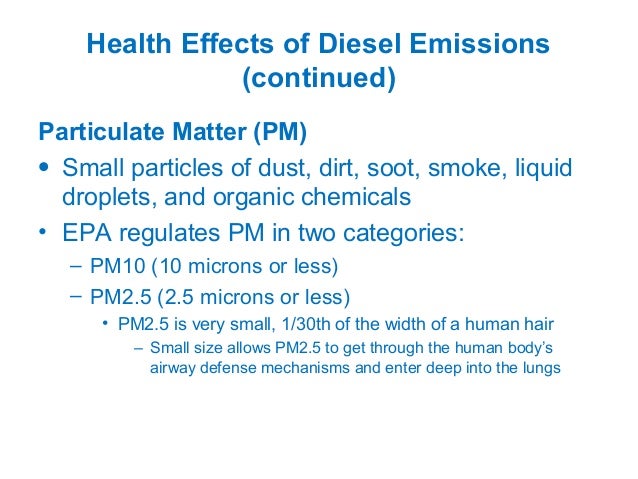Diesel Exhaust
 Photo found here
Photo found here
Sources:
The obvious, and most common sources of diesel exhaust include large trucks such as semis, buses, fire trucks, aircraft, and construction equipment. Other sources of diesel exhaust include diesel powered cars, boats, farm equipment, generators, and railway locomotives.
- The gas portion of diesel exhaust is mostly carbon dioxide, carbon monoxide, nitric oxide, nitrogen dioxide, sulfur oxides, and hydrocarbons, including polycyclic aromatic hydrocarbons (PAHs).
- The soot (particulate) portion of diesel exhaust is made up of particles such as carbon, organic materials (including PAHs), and traces of metallic compounds.
Exposure:
–People with some of the highest work exposures include truck drivers, toll booth workers, miners, forklift drivers and other heavy machinery operators, railroad and dock workers, and garage workers and mechanics. Some farm workers also spend a lot of time around diesel exhaust.
-At home if near major highways or large cities
-During commutes or traveling
Carcinogenicity:
It has proven difficult to study the potential cancer risk of diesel exhaust exposure due to peoples varying exposure levels and other unknown and unrelated cancer factors. However,
The International Agency for Research on Cancer (IARC) recognizes diesel exhaust as carcinogenic to humans.
The National Toxicology Program (NTP) comprised of the CDC, FDA, and NIH recognize diesel exhaust exposure as “reasonably anticipated to be a human carcinogen”
and the
National Institute for Occupational Safety and Health (NIOSH) recognizes diesel exhaust as a potential occupational carcinogen.
Target organs:

Heart failure and increased risk of heart attack associated with diesel exposure.
Mechanism of Action

- Oxidative stress and inflammation are considered important mechanisms of action for particle-generated cardiovascular diseases and cancer, with the latter also believed to be partially attributed to polycyclic aromatic hydrocarbons (PAHs)
Signs and symptoms of acute exposure
-Diesel exhaust can irritate the eyes, nose, throat and lungs, and it can cause coughs, headaches, lightheadedness and nausea. In studies with human volunteers, diesel exhaust particles made people with allergies more susceptible to the materials to which they are allergic, such as dust and pollen. Exposure to diesel exhaust also causes inflammation in the lungs, which may aggravate chronic respiratory symptoms and increase the frequency or intensity of asthma attacks.
Preventative measures:
– particulate filters
-aid in removing particulate matter from exhaust to prevent inhalation.
– exhaust removal systems

-transfer exhaust from enclosed spaces to open air.